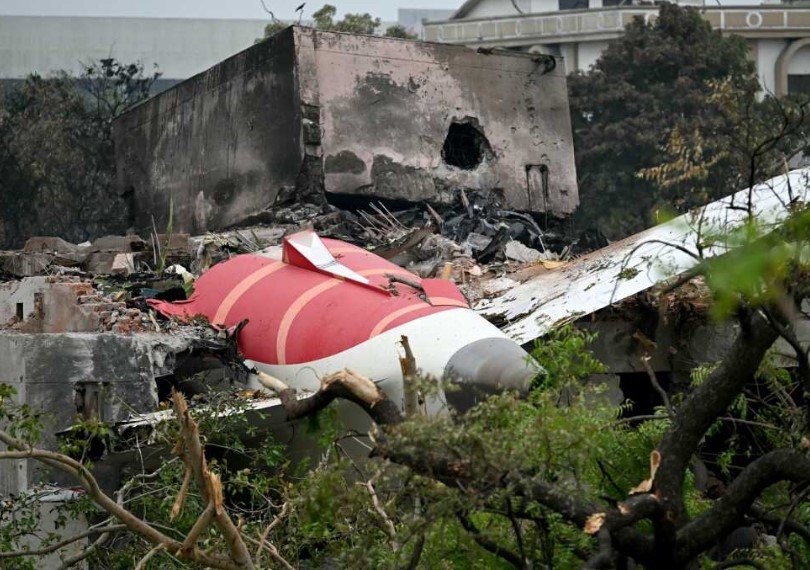India reels from its worst aviation tragedy in over a decade, and now insurers are bracing for a financial storm of historic proportions.
The tragic crash of an Air India flight in Ahmedabad last week, which claimed the lives of 241 people and devastated a neighborhood in the city’s west, is expected to result in insurance payouts totaling $475 million — possibly the highest ever in Indian aviation history. And the financial turbulence won’t stop there.
A Catastrophe Far Beyond a Plane Crash
It wasn’t just a plane falling from the sky — it was a chain reaction of loss that’s now ricocheting through the aviation insurance world.
The aircraft, a widebody twin-engine model, was fully covered for hull and engine damage. That alone is pegged at around $125 million. But the more sobering figure lies in the $350 million earmarked for liability claims — compensation for lives lost, injuries, damage to property, and more. According to Ramaswamy Narayanan of the General Insurance Corporation of India, this claim could become “one of the biggest in India’s history.”
Even as recovery teams comb through the wreckage and grieving families gather remains, the industry is calculating its losses — financial and human.

How Insurance Works in Air Disasters Like This
Behind the scenes, insuring an aircraft involves multiple layers: local insurers like GIC of India handle the initial coverage, but much of the real risk is passed on to global reinsurers.
The $125 million hull loss might be easier to handle. But liability claims? That’s where it gets more complex — and expensive. Especially since there were foreign nationals on board.
Here’s what we know so far:
-
Aircraft hull & engine loss: ~$125 million
-
Passenger/family compensation & third-party liabilities: ~$350 million
-
Total expected insurance claim: ~$475 million
And remember, payouts to families of foreign nationals will depend on their country’s laws — some of which impose far higher compensation rates than India.
The Premium Shockwave Is Coming
The Indian aviation insurance market isn’t exactly a cash cow. According to GlobalData, total annual premium intake for aviation in India was about $150 million in 2023. So this single crash represents more than triple the industry’s intake from premiums.
“Insurance premiums will either go up now or sharply rise at the time of renewal,” said one executive familiar with ongoing assessments. “No underwriter will absorb this without changing the math.”
Already, whispers across insurance offices suggest that rates could spike by anywhere from 20% to 50% for airlines operating in the country. Those costs will inevitably get passed on — to travelers, to cargo clients, to taxpayers in some cases.
And insurers abroad are watching too. With global reinsurance firms tied into India’s aviation cover through treaties and facultative reinsurance agreements, losses could extend from Mumbai to Munich to London.
A Look Back: How This Compares to Past Disasters
To understand the scale, you have to go back.
India hasn’t seen a disaster of this magnitude since the Mangalore crash in 2010, where an Air India Express flight overshot the runway, killing 158. That insurance payout? About $75 million total.
This one dwarfs that. And globally, only a handful of crashes have pushed claims this high — most involving major carriers in Europe or the US.
Here’s a snapshot:
| Incident | Year | Death Toll | Total Insurance Claim |
|---|---|---|---|
| Air France Flight 447 | 2009 | 228 | ~$330 million |
| Malaysia Airlines MH370 | 2014 | 239 | ~$300 million |
| Air India Ahmedabad Crash | 2025 | 241 | ~$475 million (est.) |
This puts India’s recent tragedy near the very top of global aviation losses, both in lives and dollars.
Families Mourn While Legal Wrangles Begin
While officials tally the dead and insurers crunch the numbers, families are left with nothing but ashes, memories, and questions.
One of the crew members, Saineeta Chakravarti, was brought home to Juhu in Mumbai on Monday. Her family — stunned, silent — stood beside her coffin in disbelief. Hers is just one of more than two hundred stories unfolding across homes from Kerala to Canada.
There’s a legal side, too. Already, law firms in Europe and the US are reportedly preparing claims for foreign victims. And given international aviation laws and compensation conventions like the Montreal Convention, India may see complex cross-border court battles.
One-sentence paragraph here.
Grief is universal, but compensation isn’t.
Ripple Effects Across Airlines and the Market
There’s no doubt this will change how aviation insurance is priced — especially in emerging markets. But it may also change how airlines approach risk and safety compliance.
“Whenever something of this scale happens, everyone re-evaluates,” said an insurance broker from London who deals with multiple Asian carriers. “Underwriters will look closer at safety records, pilot training, fleet age. Nothing will be assumed anymore.”
For now, Air India faces intense scrutiny — not only from investigators and regulators but from its own insurers and shareholders. Tata Group, which acquired Air India in 2022, may have to navigate tough months ahead.
In short, this wasn’t just a crash. It was a financial, emotional, and regulatory earthquake — and the tremors have only just begun.
